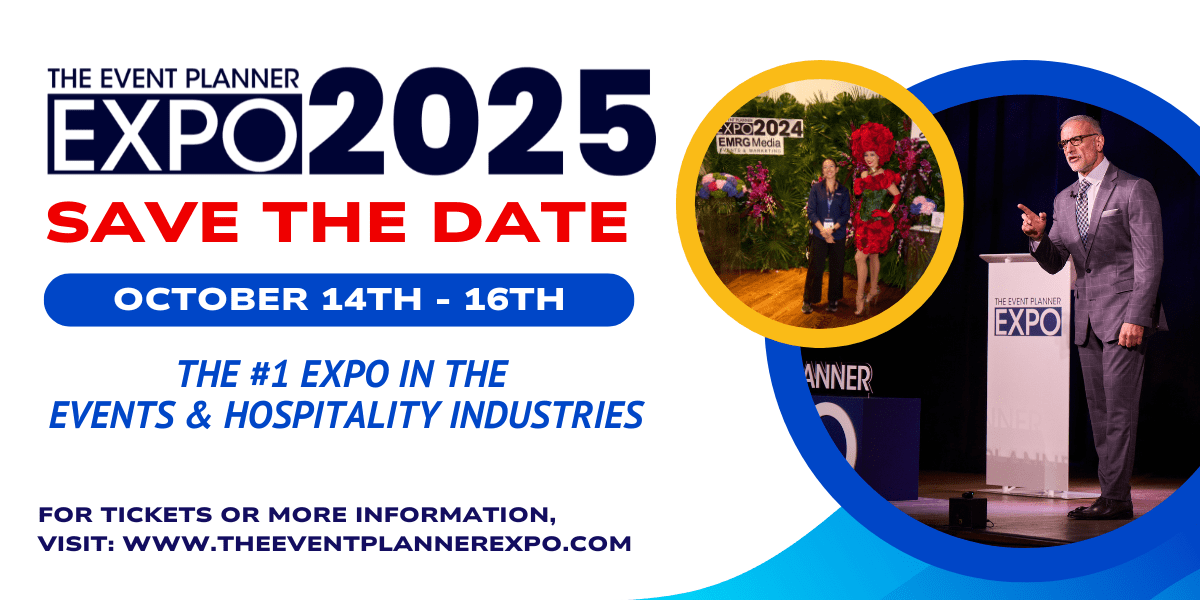Elevating Small Touchpoints: The Details Guests Remember Most

In New York City, where events happen daily and competition for attention is fierce, the biggest impression often comes from the smallest details. Guests have high expectations in a city like this. What they talk about later, though, are the touchpoints they didn’t see coming — the clever welcome moment, the personalized element at a table, the surprise interaction that made the night feel designed just for them.
When event planners focus on these subtle details, they create an environment where every corner and every exchange reinforces the brand story. Elevating touchpoints takes every event up a notch. And your guests will notice.
First Impressions Start at the Curb
The guest experience begins long before the first cocktail is served. From arrival to registration, every step sets the tone. A branded valet stand with sharp uniforms makes a stronger statement than a plain jacket and clipboard. A welcome carpet in brand colors can transform a standard lobby into an immersive entryway.
Think about the sensory details too. A curated scent diffused in the arrival space primes guests emotionally. A micro-performance outside the venue — a live saxophonist, a juggler, or an illusionist — signals right away that this is not business as usual. The brand message is already alive before the guest crosses the threshold.
Signage That Feels Smart, Not Standard
Directional signage is functional, but in New York, it should also be creative. Forget paper arrows taped to walls. Projection-mapped wayfinding on the floor, neon installations, or branded lightboxes make navigation part of the experience.
When signage reflects the brand tone — sleek and minimal for luxury, bold and graphic for lifestyle, artistic for creative brands — it turns a necessity into an impression point. Guests feel guided without feeling herded, and the aesthetic reinforces the event identity.
Hassle Free Check-In
The registration desk doesn’t have to be a headache. It can set the tone for the entire experience.
Digital kiosks keep things moving and show off your event’s modern edge. Mobile scanners let staff check people in with a smile instead of sending them to a line. Even simple touches, like offering sparkling water, handing out branded totes, or greeting each guest warmly, make a big difference.
Better yet, turn check-in into a brand moment. A wellness brand might offer guests a quick aromatherapy spritz. A tech company could use facial recognition check-in to showcase innovation. Registration doesn’t have to feel like the DMV. It can feel like the first chapter of the event story.
Smart Seating for A Stronger Impression
Seasoned planners know guests are extremely aware of the seating setup. It’s one of those details that speaks louder than you think, setting the tone before anything even starts. Assigned seating should be intentional and designed with care, so it feels personal and well-planned.
Seating displays can double as décor: escort cards hanging from sculptural installations, names printed on edible treats, or digital screens that reveal seats through playful interactions. It’s one of those details that quietly tells guests, “We thought of you.”
At the table, comfort matters. Sturdy, stylish chairs, breathable cushions, and tables set at appropriate spacing keep guests physically at ease. Add in branded or thematic place cards, personalized menus, or small conversation prompts and suddenly seating becomes an intentional touchpoint instead of just logistics.
Bar Service That Doubles as Theater
Drinks are expected. The way they are delivered can be unforgettable. Mobile cocktail carts, molecular mixology, or branded signature cocktails elevate a simple pour into an entertainment moment.
Planners can tie drinks directly to brand messaging. A financial company might offer “liquid assets” with gold-flecked cocktails. A wellness brand might serve fresh-pressed juice mocktails in sustainable glassware.
Even water service can feel special. Infused waters presented in sleek decanters or served by roving staff with trays become memorable details. Guests talk about the little things when they feel intentional.
Restrooms as Design Statements
It might sound minor, but restrooms are often where guests judge whether an event was truly well executed. A luxury gala loses credibility if the bathrooms are dimly lit and poorly stocked.
Add fresh flowers, designer soaps, branded hand towels, or even a restroom attendant offering mints and hand lotion. Music playlists piped into the space reinforce the atmosphere. For high-energy events, digital mirrors with fun animations or branded hashtags turn a basic necessity into another experience zone.
Guests notice. They tell friends later, “Even the bathrooms were amazing.” That’s a touchpoint that sticks.
Food Beyond the Plate
Catering is a major spend, but presentation is the detail that elevates it. Mini-tastings offered tableside, edible branding on desserts, or live chef activations spark conversation.
Food stations can tell stories. A publishing brand might create a “library of flavors” where each station looks like a bookshelf. A travel brand might theme stations by global destinations.
Even utensils can become touchpoints. Custom-engraved cutlery, branded eco-friendly chopsticks, or edible spoons take a necessity and turn it into an intentional brand moment.
Small Tokens With Big Impact
Forget the tired tote bag of generic swag. Guests remember thoughtful takeaways. Items should be useful, memorable, and tied to the event purpose.
Think locally sourced goods from NYC artisans, custom playlists tied to the entertainment, or sustainable gifts that reinforce values. Better yet, make it interactive. Guests choose their own gift from a curated “brand shop” before leaving. The sense of agency makes the token feel personal.
When swag feels curated, guests don’t leave it behind. They keep it, use it, and remember the event every time they do.
Keep the Energy Moving
It’s easy to focus on the big moments, like the keynote, the dinner, the reveal. But what really separates a smooth event from a choppy one is what happens in between each aspect of the event. Those pauses between segments? That’s where energy goes to die if you’re not careful.
Use transitions as mini experiences for your guests. Have roving performers guide guests to the next space. Let lighting shifts or subtle music cues lead the flow. Even a friendly brand rep chatting with guests can keep the energy alive while people move around.
These small details rarely get called out, but guests feel them. When transitions are tight, the night feels effortless.
Surprise Interactions Guests Don’t See Coming
Guests expect a program. What they talk about later are the moments in between.
Imagine a roaming poet who writes personalized couplets for attendees on the spot. A photo booth disguised as an art installation. A magician performing close-up tricks during dessert. These are not headliner moments, but they are sticky ones — the details guests recount when someone asks, “How was the event?”
Surprise interactions don’t have to be costly. They just have to feel clever, intentional, and connected to the brand.
Lighting as a Touchpoint, Not Just a Utility
Lighting is often treated as technical, but it’s one of the strongest atmospheric details. Small choices — uplighting in brand colors, pinspotting on centerpieces, or subtle shifts in hue between program sections — create mood cues guests feel instinctively.
Even micro-touches like dimming lights during dessert service or highlighting the exit with warm tones make guests feel guided. When lighting reinforces the emotional flow of the event, it becomes a silent but powerful detail.
Sound That Guests Don’t Consciously Notice
Audio is another invisible touchpoint. Crisp sound, properly balanced, communicates professionalism. Fuzzy mics or overpowering bass make events feel sloppy.
Go further with intentional sound design. Curate playlists for each program phase. Use live sound effects or voiceovers to introduce speakers. Even ambient sounds — waves, city streets, forest birds — can reinforce themes between acts.
Guests may not comment directly, but they will feel it. Subtle, thoughtful sound design enhances the event without drawing attention away from the brand.
Staff That Embody the Brand
Every staff interaction is a touchpoint. If staff feel disconnected from the event purpose, guests notice. If staff are briefed to embody the brand — from wardrobe to greeting style — guests experience cohesion.
A luxury brand might have staff in tailored black with polished demeanor. A wellness brand might use natural fabrics and soft, calm communication. A tech brand might put staff in modern streetwear with an approachable vibe.
The staff are the human detail guests remember most because they create direct contact. Briefing them well pays off.
Elevating the Farewell
The last impression is as powerful as the first. Too many events let guests drift out unnoticed. Elevate departure with intentionality.
Offer warm cookies packaged in branded boxes. Arrange a jazz trio by the coat check. Hand guests a parting drink for the road. Even small touches like branded thank-you notes on windshields at valet make departures memorable.
Guests who leave feeling cared for and surprised are far more likely to talk about the event afterward. The final moment seals the memory.
The Event Planner Expo: Where the Little Things Steal the Show
The Event Planner Expo 2025 made one thing clear: details run the show. The check ins, the transitions, the tiny surprises are what everyone is still talking about. Those ideas set a new standard for what creating a thoughtful event looks like in New York City.
If you missed it, don’t worry. The Event Planner Expo 2026 is already shaping up to be another deep dive into how planners can capitalize on those small details. You will meet vendors who obsess over the small things, swap ideas with planners who notice everything, and see how those micro moments can drive real ROI and guest connection.
This is the space where ideas start small and grow into the moments people remember most.
